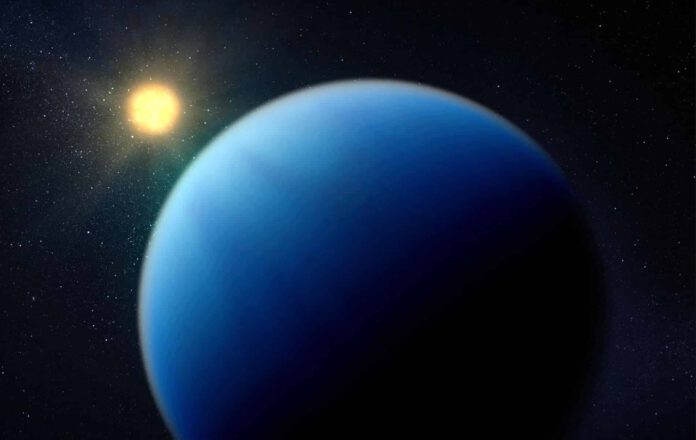
The Mysterious Shortage of Medium-Sized Celestial Bodies
Curiously, there is a remarkable shortage of medium-sized celestial bodies. Recent findings suggest that certain exoplanets are losing their atmosphere and thereby shrinking due to a process named ‘core-powered mass loss’.
Diversity among Exoplanets
Exoplanets come in a variety of shapes and sizes, ranging from small, rocky worlds to immense gas giants. However, researchers have discovered surprisingly few medium-sized exoplanets, that is, planets with a radius between 1.5 and 2 times larger than Earth. This missing group lies precisely between rocky super-Earths and larger gas-shrouded planets known as sub-Neptunes. Astronomers have been trying to identify the cause of this curious gap, and a new study finally sheds more light on the matter.
The Unintentional Gap
Researchers have discovered more than 5.000 exoplanets to date. “Interestingly, there are fewer planets with a diameter between 1.5 and 2 times that of Earth than initially expected,” says researcher Jessie Christiansen. “We have, however, now gathered enough data to conclude that this gap is not random. Something is preventing planets from reaching and maintaining this specific size.”
The Theory of Shrinking Planets
Scientists suspect this gap could be explained by the gradual loss of certain sub-Neptunes’ atmosphere. In this scenario, the atmosphere ‘leaks’ away when the planet lacks sufficient mass – and thus gravity – to retain its atmosphere. As a result, sub-Neptunes that are not massive enough would shrink to about the size of super-Earths, reportedly resulting in the striking divide between these two categories of planets.
The Cause?
But that’s not the entire story yet. Precisely how these planets lose their atmosphere remained largely a mystery. Researchers consider two likely mechanisms- one is core-powered mass loss, and the other is photoevaporation. Recent research has provided new evidence that the first mechanism, core-powered mass loss, is more probable.
The Research
In this research, scientists used data from NASA’s K2, an extended mission from the Kepler space telescope which searched for exoplanets in our Milky Way from 2009 to 2018. The focus was on the star clusters Praesepe and Hyades, aged between 600 million and 800 million years. Since planets are generally assumed to be the same age as their parent star, the sub-Neptunes in this system would be beyond the age when photo-evaporation is likely to occur, but not yet old enough to have undergone core-powered mass loss.
Praesepe and Hyades
On observing Praesepe and Hyades, the researchers discovered that nearly all the stars hosted a sub-Neptune. Given the age of these clusters, the team concludes that photo-evaporation likely didn’t occur, meaning these planets retained their atmospheres unlike older stars studied by K2 (stars older than 800 million years), of which only 25% harbor sub-Neptunes. The older age of these stars coincides more with the timeframe expected for core-powered mass loss to occur.
Core-Powered Mass Loss
In summary, it means photo-evaporation likely didn’t occur in Praesepe and Hyades, and it probably won’t happen either. If it had occurred, it would have happened hundreds of millions of years earlier and the planets would have little to no atmosphere left. This implies that over time, the least massive sub-Neptunes might still lose their atmospheres due to core-powered mass loss.
The Mysterious Absence
The study’s findings are exciting as they can explain the mysterious absence of planets 1.5 to 2 times larger than Earth. It appears that some exoplanets do lose their atmospheres and shrink. Meanwhile, astronomers have found evidence for a possible cause: the planets’ cores pushing away their atmosphere from the inside.
A Journey Intensifies
Despite these new insights, the team stresses that research into the planetary gap is not yet wholly complete. Our current understanding of photo-evaporation and/or core-powered mass loss might still evolve. Therefore, we must await further studies for definitive answers.











